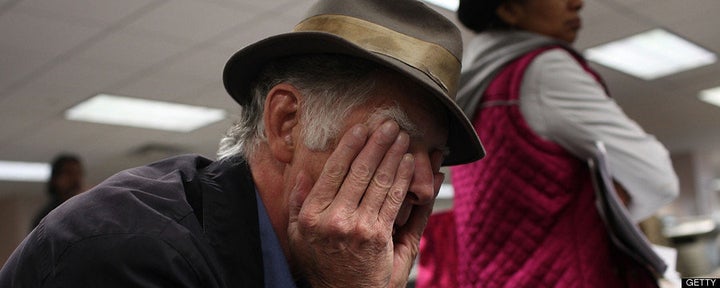
 U.S. private employers have recorded 11 consecutive months of job gains, yet the number of people who are so discouraged that they have given up searching for work stands at an all-time high.
U.S. private employers have recorded 11 consecutive months of job gains, yet the number of people who are so discouraged that they have given up searching for work stands at an all-time high.
Friday's employment report is expected to show the pace of payroll growth accelerated last month after a disappointing showing in November. However, consumers' assessment of the job market deteriorated in December, according to the Conference Board's latest consumer confidence survey.
This disconnect is symptomatic of the state of the labor market. Yes, it is recovering, but at a pace that can hardly keep up with population growth, let alone quickly bring down the 9.8 percent unemployment rate.
Private employment increased by an average of 106,000 per month through November. At that rate, it would take more than 6 years just to replace the jobs lost during the latest recession.
There is reason to believe hiring will pick up in 2011.
Many economists have raised economic growth forecasts, in part because of a tax deal that keeps in place lower rates enacted under President George W. Bush, and planned job cuts are down 60 percent from a year ago.
However, that may not make job hunting much easier, said John Challenger, chief executive of job placement firm Challenger, Gray & Christmas in Chicago.
"The job market could be even more competitive as improving job prospects entice people who abandoned their job searches out of frustration to re-enter the labor pool," he said.
The labor pool looks like it has sprung a leak. In a civilian labor force 154-million strong, only 64.5 percent were either working or looking for a job in November, a rate that matched October as the lowest since the early 1980s.
If workers come pouring back into the labor market more quickly than employers want to hire, the jobless rate will rise. The Labor Department counts people as unemployed only if they are actively looking for work, so those discouraged workers -- nearly 1.3 million of them as of November -- are excluded.
A look at the gender breakdown offers some signs that the dropout rate could stay high even if hiring improves.
Nearly two-thirds of the discouraged workers were men, perhaps a reflection of sharp declines in male-dominated industries such as construction and manufacturing, where jobs are expected to remain scarce.
Ethan Harris, an economist with Bank of America-Merrill Lynch, said the economic healing process will be faster for women than for men, in part because women are more likely to go to college and obtain the skills needed to find a job.
Among 18- to 24-year-olds, about 41 percent were enrolled in college or graduate school, according to Census data. Broken down by gender, 45.3 percent of women in that age group were enrolled, compared with just 36.7 percent of men.
STALL SPEED
The slow-healing labor market arguably poses the biggest threat to U.S. economic recovery and the biggest headache for Federal Reserve Chairman Ben Bernanke.
Bernanke said in early December it would take four to five years for the unemployment rate to come down to what he called more "normal" levels of around 5 percent to 6 percent.
He is scheduled to testify on monetary and fiscal policy before the Senate Budget Committee on Friday, one hour after the employment report is released. He no doubt will face questions on what more can be done to speed up the recovery.
Bernanke and his fellow Fed officials think economic growth will come in around 3 percent to 3.6 percent in 2011, which would be a step up from 2010's expected 2.6 percent rate.
Andrew Busch, a currency and public policy strategist at BMO Capital Markets, said he remains optimistic about the U.S. economy's 2011 prospects. But he also has compiled a list of reasons why growth might fall short of expectations.
The potential trouble spots include a renewed housing slump, tax hikes from budget-pinched states and a congressional battle over whether to raise the debt ceiling to allow the Treasury Department to borrow more.
Busch's biggest concern is that the economy manages just 2.5 percent economic growth, too slow to spur much hiring, triggering a Japan-esque deflation cycle.
"If you hit stall speed at 2.5 percent (growth), you've got a major problem," Busch said.
(Editing by Dan Grebler)
Copyright 2010 Thomson Reuters. Click for Restrictions.